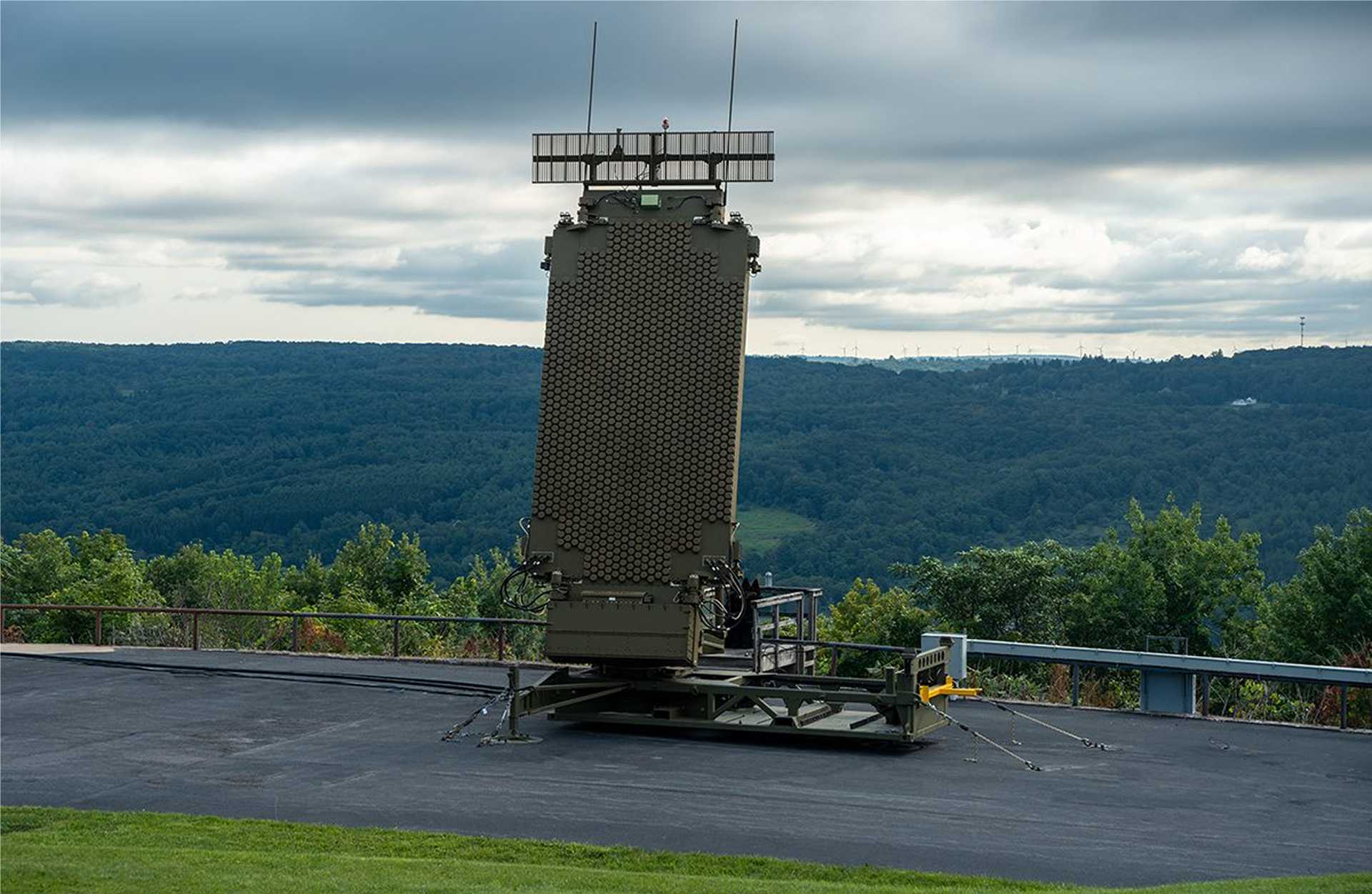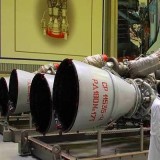U.S. Air Force Orders 19 Lockheed Martin TPY-4 Radars to Enhance Long-Range Air Surveillance Capabilities

{loadposition bannertop}
{loadposition sidebarpub}
In a recent publication dated April 22, 2025, by the U.S. defense news outlet “Defense Daily”, it was revealed that the U.S. Air Force has awarded Lockheed Martin a cumulative total of $472 million for the acquisition of 19 TPY-4 ground-based radars. These systems are being procured under the Three-Dimensional Expeditionary Long-Range Radar (3DELRR) program, which is managed by the Air Force Life Cycle Management Center (AFLCMC) at Hanscom Air Force Base, Massachusetts.Follow Army Recognition on Google News at this link
The Lockheed Martin TPY-4 is a next-generation, ground-based radar developed by Lockheed Martin for the U.S. Air Force. Operating in the L-band with advanced AESA technology, it provides 360-degree long-range air surveillance and missile defense capabilities, designed to detect threats up to 556 km away, including drones and ballistic missiles. Its modular, mobile design supports rapid deployment in diverse mission environments. (Picture source: Lockheed Martin)
The Lockheed Martin TPY-4 is a next-generation, L-band active electronically scanned array (AESA) radar designed to enhance long-range air surveillance and missile defense capabilities significantly. The system incorporates Gallium Nitride (GaN) transmitter technology, which offers improved power efficiency and reliability over older systems. Its fully digital, software-defined architecture enables it to adapt to emerging threats and mission requirements rapidly—key qualities for modern and future battlefield environments.
One of the standout capabilities of the TPY-4 is its 360-degree coverage and long-range detection, capable of identifying aerial threats, including low-profile unmanned aerial systems (UAS) and ballistic missiles, at distances of up to approximately 556 kilometers (300 nautical miles). This performance remains effective even in challenging conditions with high levels of electromagnetic interference. The radar’s advanced signal processing enhances its ability to discern smaller, stealthier targets, supporting more robust defense and surveillance operations.
The radar’s modular and transportable design is another major advantage. It can be deployed in both fixed and mobile configurations and is compatible with multiple modes of transport, including C-130 and C-17 aircraft, ground vehicles, rail, and even helicopters. This flexibility aligns with the U.S. Air Force’s Agile Combat Employment (ACE) strategy, which emphasizes the need for rapidly deployable and resilient airpower platforms.
On April 7, 2025, the U.S. Air Force received its first TPY-4 radar, marking a significant milestone in the program. This delivery initiates government testing and sets the stage for full operational deployment. The Air Force aims to field up to 35 radar units by the end of 2028.
Despite its strategic value, the 3DELRR program has faced some developmental delays. A Department of Defense Inspector General report pointed to early transitions into rapid fielding phases before sufficient prototyping had been completed. Nevertheless, recent developments show the program is back on track, steadily advancing toward its capability objectives.
Internationally, the TPY-4 has also attracted interest, notably from Norway, which has ordered 11 units. This underscores the system’s appeal for a range of operational environments and threat profiles.
For the U.S. military, the TPY-4 provides essential enhancements in detection and tracking across a wide range of potential aerial threats. It strengthens situational awareness, defensive readiness, and operational flexibility. With its state-of-the-art AESA technology, digital adaptability, and deployable design, the TPY-4 radar is a critical investment that enhances the Air Force’s ability to secure airspace and respond effectively to modern threat scenarios.

{loadposition bannertop}
{loadposition sidebarpub}
In a recent publication dated April 22, 2025, by the U.S. defense news outlet “Defense Daily“, it was revealed that the U.S. Air Force has awarded Lockheed Martin a cumulative total of $472 million for the acquisition of 19 TPY-4 ground-based radars. These systems are being procured under the Three-Dimensional Expeditionary Long-Range Radar (3DELRR) program, which is managed by the Air Force Life Cycle Management Center (AFLCMC) at Hanscom Air Force Base, Massachusetts.
Follow Army Recognition on Google News at this link
The Lockheed Martin TPY-4 is a next-generation, ground-based radar developed by Lockheed Martin for the U.S. Air Force. Operating in the L-band with advanced AESA technology, it provides 360-degree long-range air surveillance and missile defense capabilities, designed to detect threats up to 556 km away, including drones and ballistic missiles. Its modular, mobile design supports rapid deployment in diverse mission environments. (Picture source: Lockheed Martin)
The Lockheed Martin TPY-4 is a next-generation, L-band active electronically scanned array (AESA) radar designed to enhance long-range air surveillance and missile defense capabilities significantly. The system incorporates Gallium Nitride (GaN) transmitter technology, which offers improved power efficiency and reliability over older systems. Its fully digital, software-defined architecture enables it to adapt to emerging threats and mission requirements rapidly—key qualities for modern and future battlefield environments.
One of the standout capabilities of the TPY-4 is its 360-degree coverage and long-range detection, capable of identifying aerial threats, including low-profile unmanned aerial systems (UAS) and ballistic missiles, at distances of up to approximately 556 kilometers (300 nautical miles). This performance remains effective even in challenging conditions with high levels of electromagnetic interference. The radar’s advanced signal processing enhances its ability to discern smaller, stealthier targets, supporting more robust defense and surveillance operations.
The radar’s modular and transportable design is another major advantage. It can be deployed in both fixed and mobile configurations and is compatible with multiple modes of transport, including C-130 and C-17 aircraft, ground vehicles, rail, and even helicopters. This flexibility aligns with the U.S. Air Force’s Agile Combat Employment (ACE) strategy, which emphasizes the need for rapidly deployable and resilient airpower platforms.
On April 7, 2025, the U.S. Air Force received its first TPY-4 radar, marking a significant milestone in the program. This delivery initiates government testing and sets the stage for full operational deployment. The Air Force aims to field up to 35 radar units by the end of 2028.
Despite its strategic value, the 3DELRR program has faced some developmental delays. A Department of Defense Inspector General report pointed to early transitions into rapid fielding phases before sufficient prototyping had been completed. Nevertheless, recent developments show the program is back on track, steadily advancing toward its capability objectives.
Internationally, the TPY-4 has also attracted interest, notably from Norway, which has ordered 11 units. This underscores the system’s appeal for a range of operational environments and threat profiles.
For the U.S. military, the TPY-4 provides essential enhancements in detection and tracking across a wide range of potential aerial threats. It strengthens situational awareness, defensive readiness, and operational flexibility. With its state-of-the-art AESA technology, digital adaptability, and deployable design, the TPY-4 radar is a critical investment that enhances the Air Force’s ability to secure airspace and respond effectively to modern threat scenarios.





